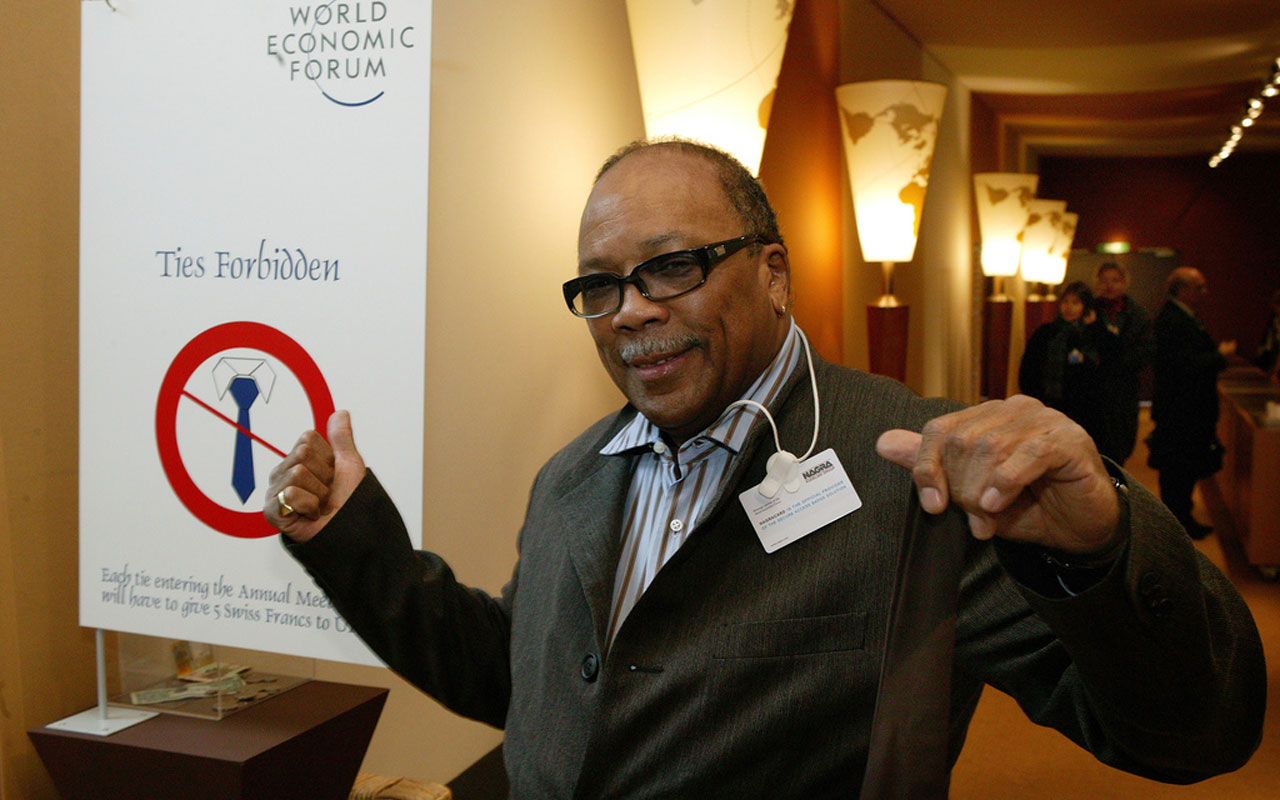
Quincy Jones photo by Andy Mettler
BY DR. JAMES R. GORE
Jazz can mean many things to many people musically; however, for the purpose of this article, the African American cultural perspective is the focus. Dr. Michael Eric Dyson in his book, Entertaining Race states: “Jazz for instance, was born in irreverence, expressing the unrespectable thoughts, outlaw perspectives, and outside-the-box beliefs of Black life. It eventually came to represent Black genius and humanity in the battle over the cultural status of Black art. It is now widely viewed as the quintessential American art form to which other Black art is compared and often found wanting” (Dyson, 2021, p. 10).
Dyson’s statement is an understatement of the role jazz as an art form plays. Rooted in the African American experience and acknowledged as an American national treasure by the United States Congressional Act, H.Con.Res.57, (100th), Jazz Preservation Act of 1987, “Whereas, jazz has achieved preeminence throughout the world as an indigenous American music and art form, bringing to this country and the world a uniquely American musical synthesis and culture through the African-American experience…”
As a cultural institution, jazz gave African American artists a platform to communicate their worldviews. Art as part of cultural identities for all human beings is especially important to African Americans, whose unique culture in America has not always provided institutional platforms for self-definition. Yet, jazz as an original American art form expresses a part of African American cultural identity, just as all human cultures illustrate their perspectives and philosophies through the humanities. Amiri Baraka provides the following insights to this fact in the anthology, The Jazz Cadence of American Culture:
We take for granted the social and cultural milieu and philosophy that produced Mozart. As Western people, the socio-cultural thinking of the eighteenth-century Europe comes to us as legacy that is a continuous and organic part of the twentieth century. The socio-cultural philosophy of the Negro in America (as a continuous historical phenomenon) is no less specific and no less important for any intelligent critical speculation about music that came out of it. (A. Baraka,1960/1998, p. 139).
Therefore, jazz music rooted in the blues became an institutional platform of African American culture to tell their stories, self-define their identities, and express their attitudes through music.
Even so, the history of African Americans in America is complicated. As jazz music became an element of American popular culture in the 20th century, due in part to technology such as, the invention of the phonograph, radio, and exposure in films. Nevertheless, systemic and institutional racism persisted, causing one of the world’s largest and longest migration of people. The Great Migration witnessed six million African Americans leaving the Jim Crow South for cities in the northern and western United States. Many African American jazz artists also migrated to Europe and experienced humanity not available in their own country.
Seattle became a prominent destination for African American migration and one of the jazz epicenters in the early 20th century. The Jackson Street Jazz District (which encompassed 5th to 15th avenue, between Jackson Street and Yesler Way) was Seattle’s primary jazz ecosystem, incorporating jazz performance and supporting economy via hotels and nightclubs. One of the first jazz clubs was the Alhambra Cabaret, named in tribute to the Alhambra palace in Granada, Spain (also known as The Red One for its reddish walls). The African American business ownership of entrepreneurs like Russell “Noodles” Smith established the Jackson Street Jazz district as an important economic and artistic zone for the nurturing of Seattle jazz artists and developing audiences. Located in a cultural pluralistic neighborhood, the Jackson Street Jazz District was a result of the city’s red-lining housing statues, but despite that, it was ideally located near Seattle’s two main train stations in downtown Seattle. This meant an accessibility to audiences and touring artists, which proved incredibly important for local businesses regarding supply and demand.
Jazz has flourished in Seattle for over one hundred years. The Jackson Street Jazz District no longer exists, however, its musical influence on the city is still relevant and present today. Likewise, the institutional status of jazz has risen from its humble beginnings. Its foundation of inclusive self-expression is still its artistic core value, “an indigenous American music and art form,” which has become a global tool for diplomacy.